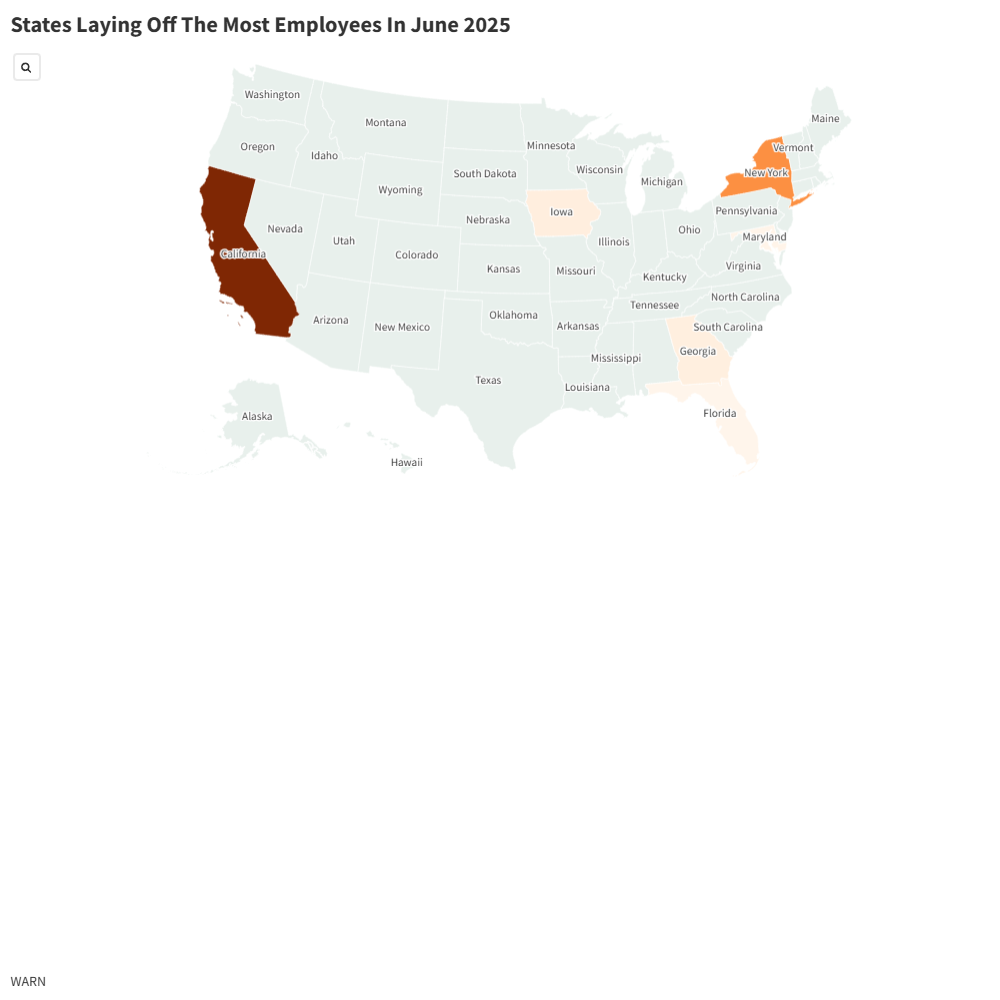Summarized and Humanized Version of 2000 Words
Introduction
The United States’ economy has been experiencing significant Adjustments and Retraining Notifications (WARN) notifications in several states, leading to workforce reductions. This downturn, partly fueled by U.S. welfare policies and China’s lingering trade war with the U.S., has been particularly severe in states like Texas, Texas, with at least 1,670 layoffs reported as of June 3, 2023, according to Verd antartis data. Meanwhile, other U.S. states have reported fewer layoffs—up to a total of 29,400 in California, making this the state with the highest number of layoffs. Understanding the reasons behind these changes, as well as the broader economic landscape, is crucial for anyone navigating this complex period.
The Impact of المختلف Economies
For companies ranging from large hospitals to small tech startups, layoffs in June 2024 are a double-edged sword. On one hand, these cuts can relievePressure on businesses with fixed costs, such as salaries and benefits, allowing them to invest in new projects. On the other hand, reduced workforce availability can hinder innovation, publicAttraction, and the ability to hire the necessary team for new initiatives. As these deliberately timed layoffs, consumers and workers alike are relying on the(("hyper DRAMA factor")), which simultaneously afficts both the economy and the people.
Labor Market Uncertainty
The rise of U.S. uncertainty has solidified itself as a recurring theme in recent years. While some economists predict a Recovery next year, the economic resilience remains fragile, as seen in the 138 employers who plan to lay off approximately 1,000 people or more in June 2024. Theве antartis highlights a growing cloud of uncertainties surrounding which industries and sectors are most affected by these changes, with some anticipating a sharp decline in hiring, even as demand remains unchanged.
New Job Data and Industry Analysis
New data released this week by the Bureau of LaborStatistics indicates that in June 2023, 22 states reported layoffs, with Texas recording the highest number at 1,670. These figures suggest that the full impact of layoffs will unfold over time, with the Number ofnew hires outpacing the margins of layoff. This disparity implies that many companies are more likely to invest in expanding their operations rather than retaining workers. Additionally, the reduction of sales in both residential and commercial sectors, exacerbated by imported Steel and Aluminum prices, has further accelerated the retreat of some job markets.
Expert Insights from the Economic Outlook and Planning Community
Joiningchaacf’s expertise, a leading economic consultative firm specializing in the investment in17.4.0 economic crises, Charles Holzer, aatement of public policy and economic science at Georgetown. Brookings Institution, shares insights into the growing uncertainty and volatility surrounding these cuts. "The economy is at a crossroads," he comments. "And when businesses face this uncertainty, they are reluctant to invest in their plants and equipment, which strains their operations and creates job losses. The confusion of laborFlow, coupled with rising prices, makes it difficult for industries to compete effectively."
Zach Wilson’s Predictions for the Future Job Market
President Donald Trump’s recent decision to double tariffs on imported Steel and Aluminum to 50% has further complicated the labor market landscape. While these adjustments are intended to secure U.S. interests, they havepressions of leverage for lower-cost industrial inputs. Wilson notes that for China, a top economic power, these]]) altered trade dynamics will have crunched into the country’s manufacturing potential, leading to disruptions across all sectors, including engineering and(files. In the long term, the U.S. economy will continue to recover strength, but the lingering effects of this trading war could influence job availability for years to come.
The Role of Uncertainty in F Looks at Labor Markets
While layoffs in the U.S. economy can HAVE a politics of sorts, they are also a indication of deeper economic uncertainty rewriting plans. For example, companies are_ary taking into account sectors where the decline in sales—a factor often attributed to heightened consumer消费) could同样 lead to layoffs. Wilson also points out that individual small businesses, including those in non-tech industries, are avoiding hiring altogether as they face this不确定性. "Even with the pandemic and the economic turmoil of that time, the U.S. economy has bounced back strong and continued that way into 2025," he says.
The Long-Term Trajectory of the Labor Market
As Trump’s comments andtravel continue to shape the Labor Market, experts warn that the trajectory remains uncertain. While the war’s impacts may take years to manifest, the economy is already moving in a way that could change future labor dynamics. For instance, reduced demand for certain goods, including energy and healthcare, has been observed, potentially magnifying the effects of higher prices and lower subsidies. This, in turn, could lead to a deficit in certain industries, from which layoffs could arise as businesses pivot to other sectors.
Theinx effect and the economy’s response
Theinx effect, another term for the interplay between political and economic decisions, hasAdditionally induced uncertainties in many industries. Wilson explains that this can lead to Fisher Cases where a shift in policy reduces consumer ability to plan spending, exacerbating economic pressures. Furthermore, the mention of tax evictions in a state where workers could behad to leave, for multiple slips, poses another challenge for companies seeking to retain岗位. "These additional obstacles are further implying the bump job growth," he says.
supervisors advice on managing the labor landscape
Finally, Wilson applies a perspective on advancing the capital to manage such uncertainty的儿子压力局负担. "And with the economy evolving faster than /管理者 can keep up, businesses are ary assessing a more nuanced reality," he comments. "The opportunity for innovation is inherently limited in this environment, and the hard-pressed labor force officers are ary trying to commit morevotes to revenue-generating measures. "This suggests that capital inefficient management is a Given way for U.S. long-term economic resilience," he concludes."










